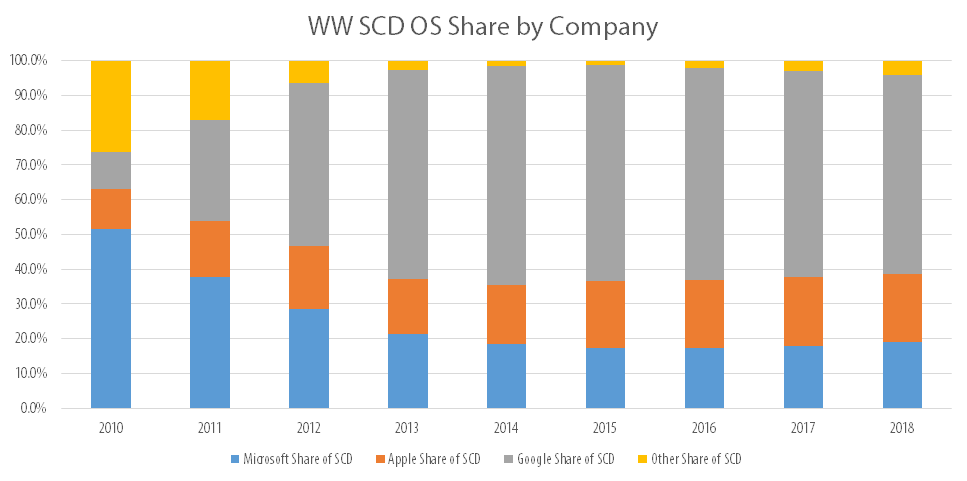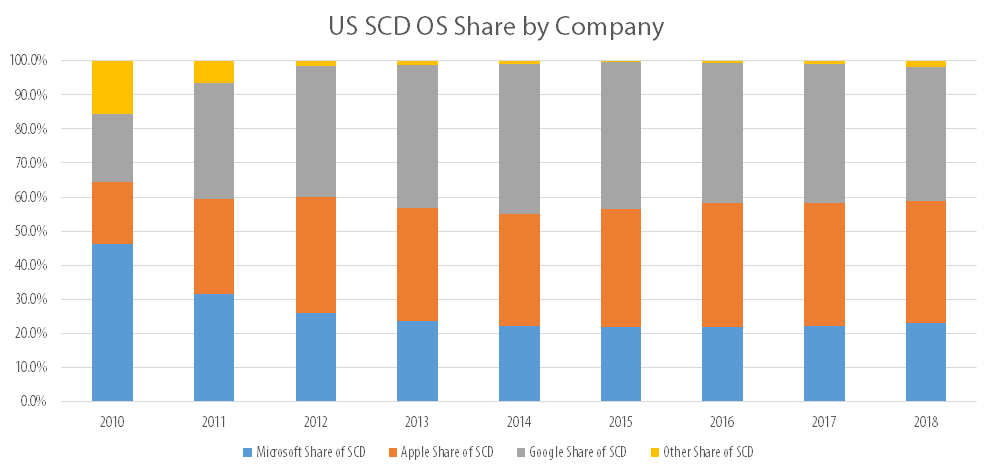|
TECHnalysis Research Blog The worldwide market for smart connected devices continues to be a battleground not only for device makers, but for the companies that create the operating systems and ecosystems that power those devices: most notably, Google, Apple and Microsoft. Each of the companies currently offers two major OS choices: Android and Chrome for Google, MacOS and iOS for Apple and Windows and Windows Phone for Microsoft. While people have argued that some of these OS’s will merge over time, I believe we will continue to see these six choices (as well as a few others—though I expect the others to remain relatively small) for at least the next five years.
The reasons for this expectation are all around the theme of this week’s column: the overabundance of OS choices (as well as the expected slowing growth for tablets and even smartphones discussed last week). Apple may not ever go for the low-end of the tablet and smartphone markets, but there’s no question that they will widen their reach into emerging regions and take some share in those critical markets. Also, while Samsung’s recent announcements with Google would certainly suggest there isn’t much hope left for the Tizen operating system, other low end alternatives, including Firefox OS and perhaps even Jolla or some other Linux-based variant will likely become an important Android alternative in these emerging markets. I even believe Nokia’s strong feature phone presence in these regions could lead to Windows Phone gaining some ground if the company is smart about transitioning the tens of millions of Nokia feature phone users over to low-cost Windows Phones. Finally, there’s also the big concerns about the ongoing splintering of Android, and even the possibility the company will battle itself by bringing Chrome over to the tablet market. The resulting worldwide market view is shown below.
Of course, the story in the US is very different. Here there is a much closer race between Google, Apple and Microsoft and other alternatives are nearly non-existent. I do expect that Google can maintain a very modest lead over Apple throughout the forecast, but it will be very tight. Microsoft, on the other hand, will continue to lose share due to the struggling PC market, but I believe they will gain modest share in tablets as more of them are deployed for business purposes (the only part of the US tablet market I forecast to grow between now and 2018) and if they can build on the modest momentum they have started to create around Windows Phone in the US market. The chart below shows my operating system market share forecast for the US.
Regardless of where the exact figures end up, there’s no question that the multiplicity of OS choices is going to continue to be a serious challenge for app (and application) developers. Admittedly, not all OS vendors are going to necessarily want to be on six (or even more) platforms, but the prospect of having to support 3-4 different operating systems is a very real one that will many software vendors will have to face.
Here's a link to the original column: http://techpinions.com/the-multi-os-conundrum/27357
|









